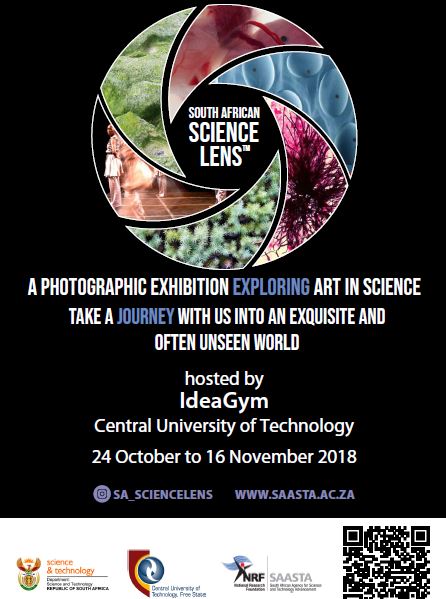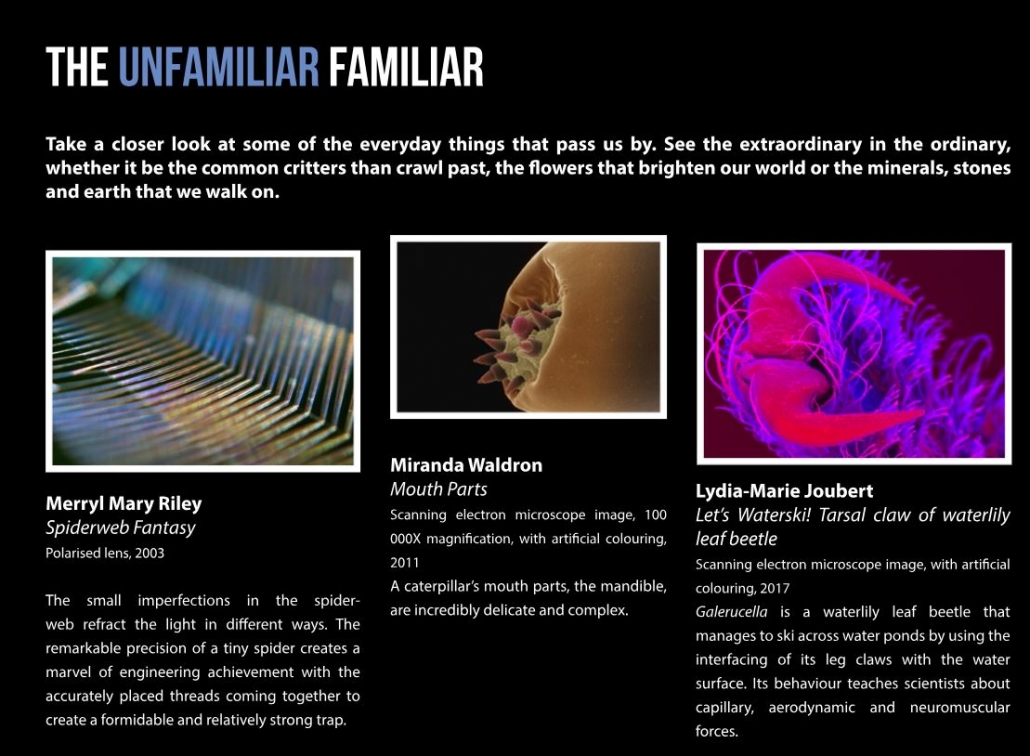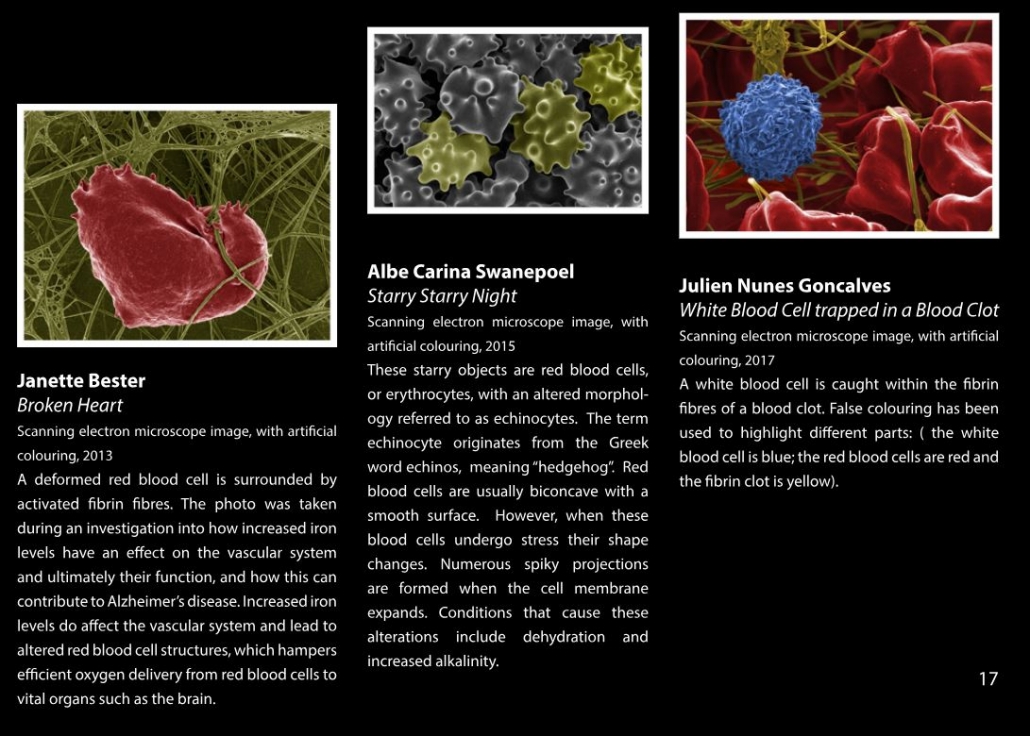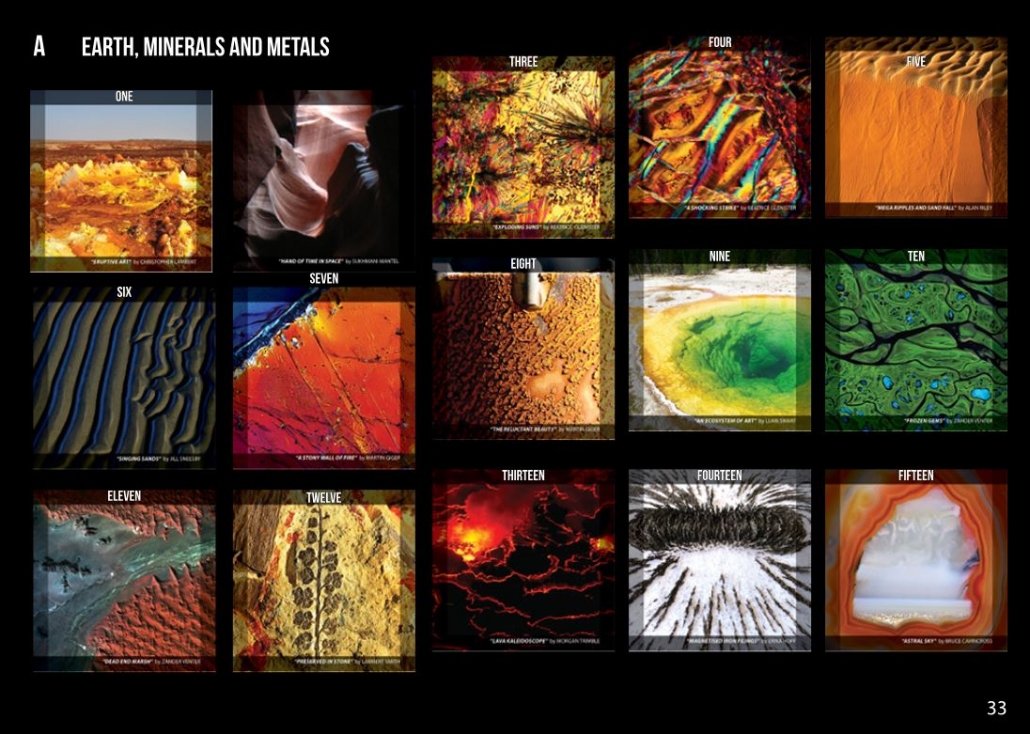gallery
The SA Science Lens® exhibition is a collection of photographs that capture the science behind the beauty in our universe and the beauty we discover through scientific investigation.
Many of the photographers are researchers or science students across numerous discplines including biology, chemistry, physics, geology and astronomy. Others are amateur or professional photographers from all walks of life that are interested in the scientific world.
This collection of images has been produced with cameras, microscopes and telescopes using various techniques. Many of these images have been generated using Scanning Electron Microscopes, simply known as SEMs. SEM technology has allowed us to see and discover more detail than has been possible with light microscopes and has facilitated great advances in material and biological science. An SEM works by scanning an object with a beam of electrons, which then bounce off the object and into the surrounding detectors. The angles and energies of these electrons are analysed, calculated and then combined to make a single image. As technology advances, so too does the power and precision of the microscopes available. Such technologies will allow us to see further and further in depth and continue to reveal more about the world around us.
These photographs were entries into the biennial SA Science LensTM competition, an initiative of the South African Agency for Science and Technology Advancement, a business unit of the National Research Foundation. The competition has been running since 2002 and consists of four different categories: Science as Art, Science Close-Up, Science in Action, and a category that changes with each competition to reflect a particular theme relevant at the time. The images from this competition are as varied as they are beautiful: some look like abstract paintings, and others like peaceful landscapes – but all are as valuable to science as they are to art.
Explore more by opening the slideshows below.
Take a closer look at some of the everyday things that pass us by. See the extraordinary in the ordinary,whether it be the common critters than crawl past, the flowers that brighten our world or the minerals, stones and earth that we walk on.
Scientific investigation, particularly in medicine, relies on zooming in to the tiny parts that make up our world and ourselves. This could be blood cells carrying the oxygen necessary for life, or nerve cells shooting messages around our bodies. The processes behind capturing these images is as technical as the results are beautiful. What can be revealed is intricate and delicate but at the same time forms the robust foundation of the world around us.
Many scientists are in a unique position to see the natural splendours of our world. Have a look at these snapshots of science close-up, science in action and science as art. From earth and minerals, to water, to fauna and flora, these images represent a diversity of life and natural phenomena.
No images available at the moment
Follow Us On Instagram : sa_sciencelens




 The South Africa Agency for Science and Technology Advancement (SAASTA) is a business unit of the
The South Africa Agency for Science and Technology Advancement (SAASTA) is a business unit of the 